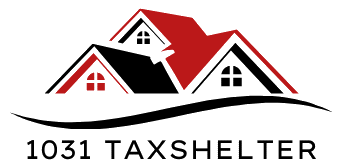What is a Reverse 1031 Exchange?
In the realm of real estate investments, a 1031 ExchangeThe sale or disposition of real estate or personal property (relinquished property) and the acquisition of like-kind real estate or personal property (replacement property) structured as a tax-deferred, like-kind exchange transaction pursuant to Section 1031 of the Internal Revenue Code and Section 1.1031 of the Treasury Regulations in order to defer Federal, and in most cases state, capital gain and... stands out as a strategic tool under the U.S. Internal Revenue Code, allowing investors to defer capital gains taxes on property sales. This article focuses on the Reverse 1031 ExchangeThe sale or disposition of real estate or personal property (relinquished property) and the acquisition of like-kind real estate or personal property (replacement property) structured as a tax-deferred, like-kind exchange transaction pursuant to Section 1031 of the Internal Revenue Code and Section 1.1031 of the Treasury Regulations in order to defer Federal, and in most cases state, capital gain and..., a unique twist on the traditional exchange, offering insights into its mechanisms, benefits, and tactical implications in real estate investment.
Defining the Reverse 1031 Exchange
A Reverse 1031 Exchange, an intriguing variant, flips the conventional process. Investors first secure a new property before selling the existing one. This approach is particularly advantageous in a fast-paced market where securing a property swiftly is essential.
The Step-by-Step Process
The journey begins with the acquisition of a new property. Post-purchase, the investor has a 45-day window to identify the property they intend to sell and a total of 180 days to finalize the sale, as dictated by IRS regulations.
Eligibility Criteria
This exchange is an option for investors aiming to swap like-kind properties for business or investment purposes. The properties in question must be part of a Qualified Exchange Accommodation ArrangementThe contractual arrangement between the Exchangor and the Exchange Accommodator Titleholder whereby the EAT holds a parked property pursuant to Revenue Procedure 2000-37. to qualify.
Advantages of Opting for a Reverse 1031 Exchange
This exchange strategy allows investors to defer capital gains taxes significantly. Moreover, it provides the flexibility to immediately acquire desirable properties, a crucial advantage in competitive real estate markets.
Tackling Challenges and Risks
Navigating the Reverse 1031 Exchange requires astute management of tight IRS-imposed deadlines. A major risk involves the inability to sell the old property within the 180-day timeframe, potentially impacting the tax deferment benefits.
Insights from Real-World Applications
Case studies of successful Reverse 1031 Exchanges shed light on effective strategies for leveraging this approach in diverse market scenarios. These real-world examples offer practical insights into the nuanced decision-making and timing critical to success.
A thorough understanding of the pertinent tax laws and astute financial planning are imperative for a profitable Reverse 1031 Exchange. Investors must navigate these complexities to ensure compliance and optimize the financial outcomes of their investments.
Professional Perspectives on Reverse 1031 Exchanges
Real estate professionals and tax advisors often emphasize the necessity of seeking expert guidance. Their expertise in market dynamics, property valuation, and legal compliance is invaluable in these transactions.
Comparative Analysis: Reverse vs. Traditional 1031 Exchanges
While the Reverse 1031 Exchange offers greater flexibility in securing properties in a dynamic market, it demands more meticulous planning and risk management compared to its traditional counterpart.
Anticipating Future Trends
With the evolving landscape of real estate investment, the usage of Reverse 1031 Exchanges is expected to rise. Investors keen on staying ahead of market trends may increasingly consider this option to enhance their portfolios.
Debunking Myths and Misconceptions
Clarifying common misconceptions about the Reverse 1031 Exchange is crucial for investors to appreciate its full potential. This section aims to demystify the process and highlight the accessible nature of these exchanges for a broad spectrum of investors.
Getting Started: Practical Steps
The initial step for investors interested in a Reverse 1031 Exchange involves consulting with a seasoned tax advisor or real estate expert. These professionals provide crucial guidance through the intricate steps of the process, ensuring legal and financial compliance.
Addressing Common Queries: FAQs
- What properties are “like-kind” in these exchanges? The term “like-kind” encompasses a wide range of real estate properties, as long as they serve business or investment purposes.
- Can these exchanges occur across state lines? Yes, interstate exchanges are permissible, provided they meet the like-kind criterion.
- What are the limitations on property types in these exchanges? The replacement property must be intended for business or investment, not personal use.
- What are the implications of not selling the old property within 180 days? Failing to sell within this period could negate the tax deferment advantages of the exchange.
- Is residing in the newly acquired property permissible? Typically, properties obtained through this exchange must be for investment or business use, not as a personal residence.
Concluding Insights on Reverse 1031 Exchanges
The Reverse 1031 Exchange offers a valuable avenue for real estate investors to defer taxes while adapting to market dynamics. Understanding its process, benefits, and regulatory requirements is crucial for leveraging this strategy effectively. With careful planning, adherence to IRS guidelines, and expert advice, investors can use the Reverse 1031 Exchange as a potent tool in their investment arsenal, enhancing their portfolio’s growth and sustainability.



